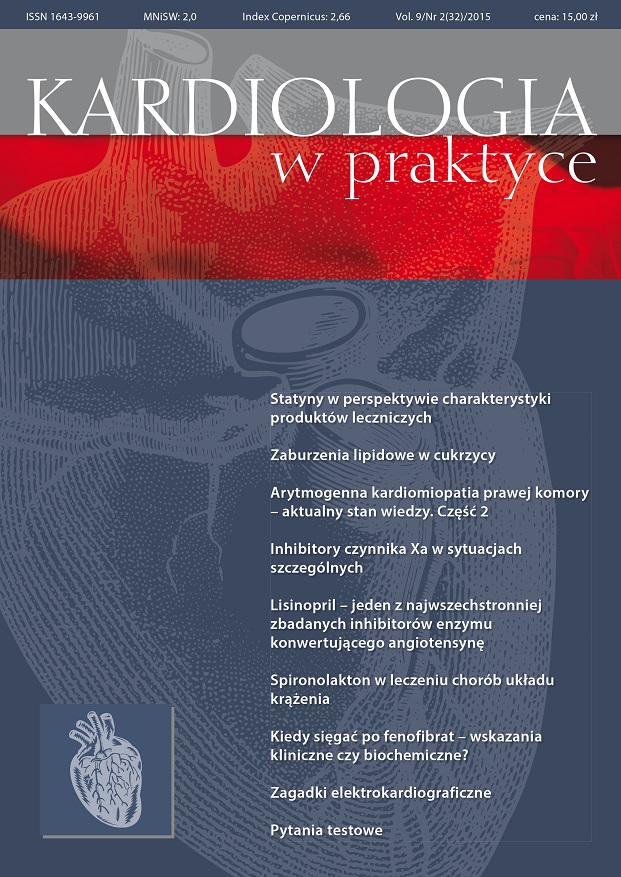Statins in the perspective of medicinal product characteristics Review article
Main Article Content
Abstract
Lipid disorders are one of the most important risk factors for diseases of the cardiovascular system. In more than half of Polish population there is abnormal concentrations of individual lipid fractions. From the drugs that interfere with the lipids, statins are the most commonly used. Among them simvastatin, atorvastatin and rosuvastatin are available in Poland. What do they differ from each other? What are the indications for them or what risks are associated with their use? The answers to these questions are contained in the characteristics of medicinal products approved by the Medicines Regulatory Authority – the documents do not always concise, often illegible and unclear, but still legally binding.
Downloads
Article Details

This work is licensed under a Creative Commons Attribution-NonCommercial 4.0 International License.
Copyright: © Medical Education sp. z o.o. This is an Open Access article distributed under the terms of the Attribution-NonCommercial 4.0 International (CC BY-NC 4.0). License (https://creativecommons.org/licenses/by-nc/4.0/), allowing third parties to copy and redistribute the material in any medium or format and to remix, transform, and build upon the material, provided the original work is properly cited and states its license.
Address reprint requests to: Medical Education, Marcin Kuźma (marcin.kuzma@mededu.pl)
References
2. 2013 ACC/AHA Guidelines on the Treatment of Blood Cholesterol to Reduce Atherosclerotic Cardiovascular Risk. Circulation 2014; 129: S1-S45.
3. Braunwald E., Zipes D., Libby P. et al.: Choroby serca – zaburzenia lipoprotein a choroby układu krążenia. Wydawnictwo Urban & Partner, Wrocław 2007: 985-1005
4. McQueen M.J., Hawken S., Wang X. et al.: Lipids, lipoproteins and apolipoproteins as risk markers of myocardial infarction in 52 countries (the INTERHEART study): a case control study. Lancet 2008; 372: 224-233.
5. Pająk A., Wiercińska E., Polakowska M. et al.: Rozpowszechnienie dyslipidemii u mężczyzn i kobiet w wieku 20–74 lat w Polsce. Wyniki programu WOBASZ. Kardiologia Polska 2005; 63(supl. 4): 1-4.
6. Urząd Rejestracji Produktów Leczniczych, Wyrobów Medycznych i Produktów Biobójczych. Online: http://www.leki.urpl.gov.pl.
7. De Backer G., Gohlke H., Graham I. et al.: European guidelines on cardiovascular disease prevention in clinical practice. Eur. Heart J. 2012; 33: 1635-1701.
8. Naci H., Brugts J., Ades T.: Comparative tolerability and harms of individual statins: a study-level network meta-analysis of 246 955 participants from 135 randomized, controlled trials. Circ. Cardiovasc. Qual. Outcomes 2013; 6(4): 390-399.
9. Brewer H.B.: Benefit-risk assessment of Rosuvastatin 10 to 40 milligrams. Am. J. Cardiol. 2003; 92(4B): 23K-29K.
10. Zipes D.P., Zvaifler N.J., Glassock R.J. et al.: Rosuvastatin: an independent analysis of risks and benefits. MedGenMed 2006; 8(2): 73.

